
The big naked-backed bat, is a bat species from South and Central America.
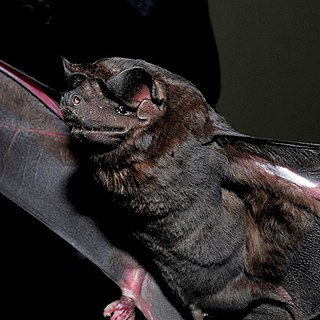
The black mastiff bat is a bat species. It ranges from the northern region of South America, most of Central America and parts of southern Mexico.
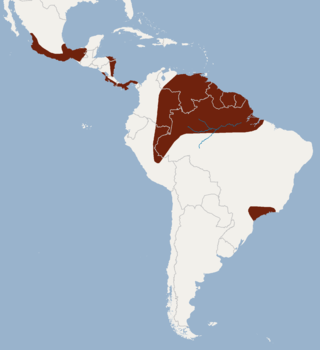
The tricolored big-eared bat is a bat species from South and Central America.
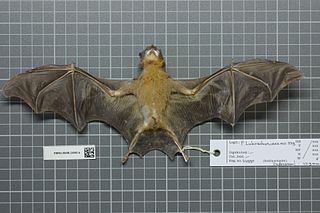
The yellow-throated big-eared bat or orange-throated bat(Lampronycteris brachyotis) is a species of bat that ranges from southern Mexico to Brazil. It is the only species within the genus Lampronycteris. A frugivore and insectivore, it is found in lowland forest up to an elevation of 700 m. Its activity is greatest in the first two hours after sunset, and peaks again after midnight.

Tomes's sword-nosed bat, also known as the common sword-nosed bat is a bat species from South and Central America. It is also found in the Bahamas, but is known from only one specimen collected on the island of New Providence.

The pygmy round-eared bat is a bat species from South and Central America.

The common big-eared bat is a bat species from South and Central America. It is a member of the family Phyllostomidae.
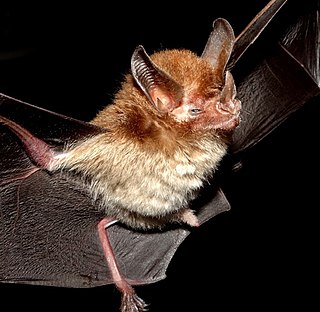
Schmidts's big-eared bat is a bat species from South and Central America.

Niceforo's big-eared bat is a bat species from South and Central America, ranging from Chiapas to Bolivia and northeastern Brazil. Its habitat is primary and secondary forest at altitudes from sea level to 1000 m. It is crepuscular, being most active in the hour after sunset and before dawn. The species is monotypic within its genus.
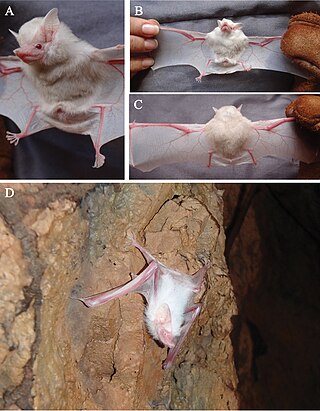
Peropteryx is a genus of 5 species of bat in the family Emballonuridae,
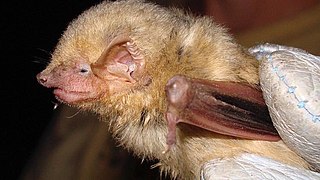
The western yellow bat is a species of vesper bat found in Mexico and the southwestern United States. This species roosts in trees such as Populus fremontii, Platanus wrightii, and Quercus arizonica. If available, the western yellow bat will use the dead fronds that encircle palm trees as a roosting site.

Findley's myotis is a species of vesper bat. It is found only on the Tres Marías Islands off the west coast of Mexico.
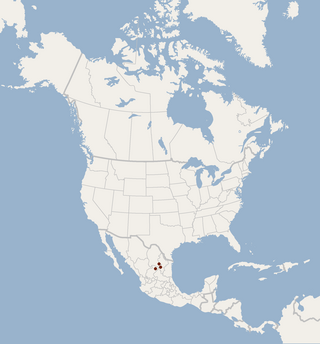
The flat-headed myotis is a species of vesper bat. It is endemic to Mexico where it is found in certain montane forests in the Sierra Madre Oriental in the northeast of the country. Once thought to be extinct, this bat was rediscovered in 2004 by Joaquín Arroyo-Cabrales and colleagues. The species is now classified as endangered by the IUCN.

The velvety fruit-eating bat, also known as Hart's little fruit bat, is a species of bat in the family Phyllostomidae. It is the only species within the genus Enchisthenes. It is found in Central America, Mexico, the United States, and northern South America.

Davis's round-eared bat is a species of bat in the family Phyllostomidae. It is found in Belize, Guatemala, Honduras, and southeastern Mexico.

The Thomas's shaggy bat is a bat species from Central and South America. It was previously included in the shaggy bat but Simmons and Handley (1998) showed that the species were distinct.
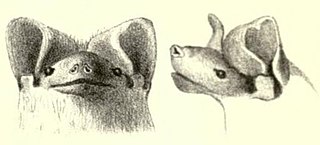
The Aztec mastiff bat is a species of bat in the family Molossidae. It is insectivorous.

The Cozumelan golden bat is a bat species found in Mexico, Guatemala, Belize, Honduras, Nicaragua, Costa Rica, Panama and Colombia. At one time, this species was considered to be a subspecies of the golden bat. Little is known about the biology of this bat, but it has a wide range, no particular threats have been identified, and the population seems steady, so the International Union for Conservation of Nature has assessed its conservation status as being of "the least concern".
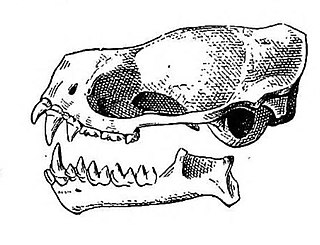
Eumops nanus is a species of bat found in Central and South America.

Platyrrhinus ismaeli is a species of bat found in South America.






















